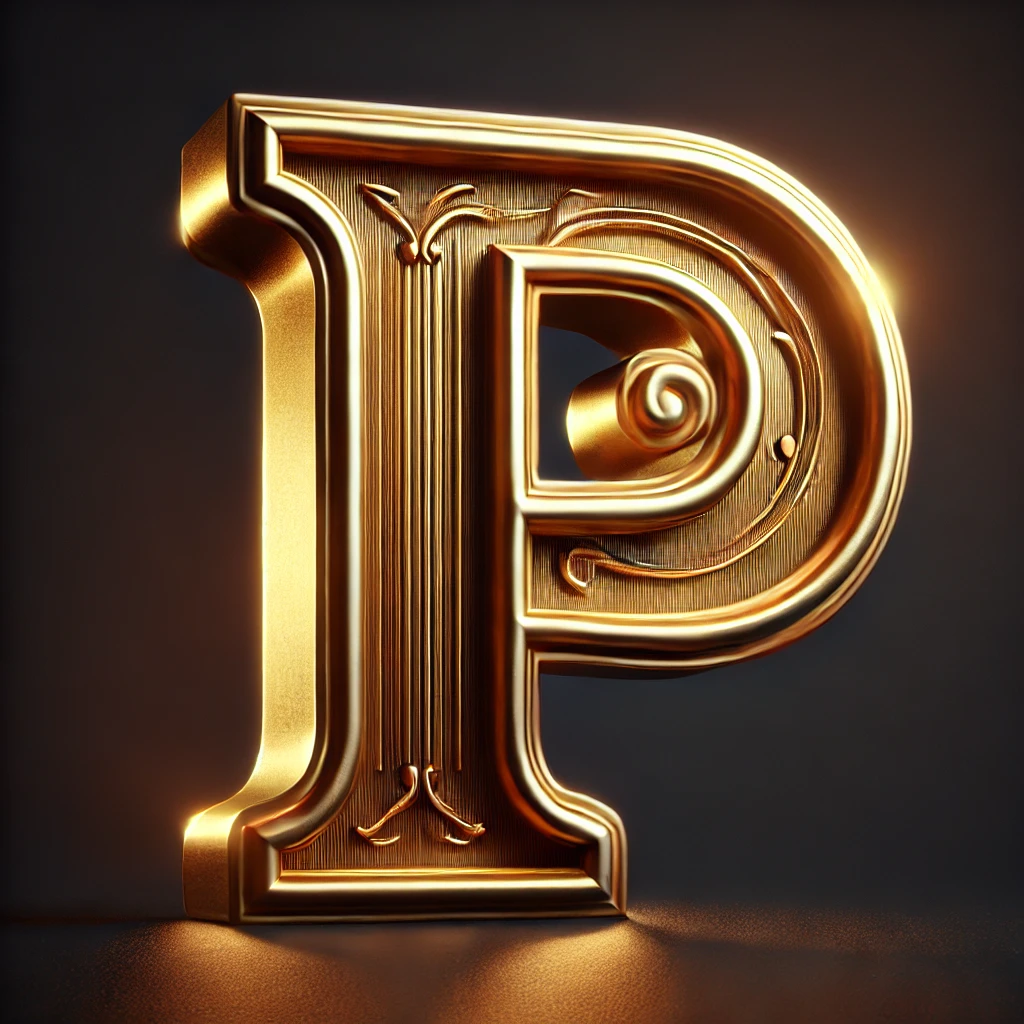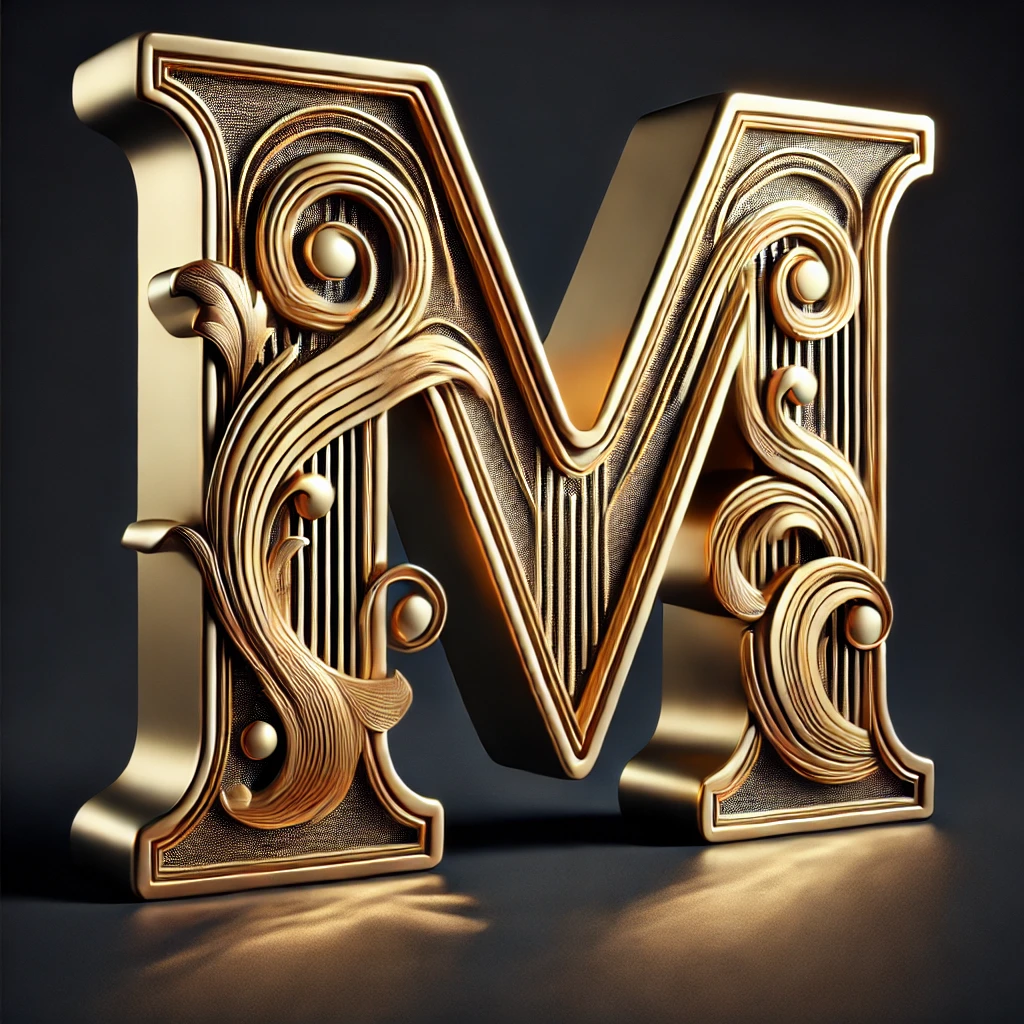
Musical Intrusmants
Musical Instruments: A Bridge from the Heart of History to the Future of Art
Introduction Music is the universal language of civilizations. From the earliest natural sounds to the most intricate melodies of today, musical instruments have played a crucial role in shaping cultures, rituals, and global artistry. Each instrument carries a story—its roots in history, the hands that crafted it, and the melodies it brings to life. At Art Gulf, we have curated a collection of unique, entirely( handmade )and (mastercrafted) musical instruments, preserving the legacy of civilizations while paving the way for the future of music.
This article explores different types of instruments, their historical significance, the oldest musical instruments in the world, and particularly the instruments rooted in Iran, ໂອມານ, Morocco, Egypt, ຈີນ, India, and Italy. Finally, we discuss their value as both artistic and financial investments for collectors, musicians, and music scholars.
1.Main Categories of Musical Instruments:
Musical instruments are generally classified into four main categories:
1. String Instruments (Chordophones): Includes Tar, Setar, Oud, Kamancheh, Violin, Qanun, and Santur.
2. Percussion Instruments (Membranophones & Idiophones): Includes Tonbak, Daf, Tabla, and Bendir.
3. Wind Instruments (Aerophones): Includes Ney, Duduk, Sheng (ຈີນ), Egyptian Nai, and Indian Shehnai.
4. Keyboard Instruments: Includes the Organ, Harpsichord, and Harmonium.
2. The Oldest Musical Instruments in the World:
1. Ancient Instruments and Their Origins
• Iran: Depictions of string instruments such as the Tar and Kamancheh have been discovered in ancient Persian paintings and seals from the Achaemenid and Parthian eras.
• Egypt: Ancient reliefs in Egyptian temples depict the Ney and Qanun, emphasizing their role in sacred and royal ceremonies.
• China: The Sheng, one of the oldest wind instruments, was crafted over 3,000 years ago.
• India: Instruments like the Sarod and Sitar are among the world’s oldest string instruments, still used in Indian classical music.
• Italy: Italy played a key role in the development of the Violin. Esteemed makers like Stradivarius in the 17th and 18th centuries crafted instruments that remain some of the most valuable in the world.
• Morocco & Oman: Various stringed and percussion instruments have deep connections to Berber and Arabic music traditions.
2. Instruments That Have Stood the Test of Time
• Oud: Originating from Mesopotamia, this versatile instrument inspired many string instruments across the world.
• Qanun: With a history of over 2,000 ປີ, this instrument is central to Middle Eastern, Turkish, and North African music.
• Kamancheh: A bowed string instrument integral to Persian and Central Asian music.
• Santur: With Persian origins, this hammered dulcimer has influenced music from India to Greece and Europe.
• Violin: Emerging from Italy, the violin has become a fundamental instrument in both Western and Eastern classical music.
3. Prominent Musical Instruments by Country
1. Iran
• Tar: Made from mulberry wood and lambskin, known for its deep and expressive tone.
• Setar: A delicate instrument used in Persian Sufi music.
• Kamancheh: A crucial bowed string instrument in Persian music.
• Santur: A trapezoidal hammered dulcimer with 72 strings, producing a mesmerizing sound.
• Tonbak: The principal goblet drum of Persian music, known for its intricate techniques.
2. Oman
• Oud: Crafted from high-quality woods like rosewood and walnut, producing a distinctive sound.
• Omani Daf: A frame drum used in traditional and ceremonial music.
3. Morocco
• Guembri: A plucked string instrument used in Gnawa music.
• Bendir: A large frame drum integral to Moroccan folk music.
4. Egypt
• Egyptian Ney: A reed flute that holds a significant place in Arabic classical music.
• Qanun: A key instrument in Arabic and Middle Eastern classical traditions.
5. China
• Sheng: One of the earliest known wind instruments, still played in traditional Chinese music.
• Guzheng: A zither-like instrument, similar to the Qanun but played with unique techniques. 6. India
• Sitar: A fundamental instrument in Hindustani classical music, known for its unique resonant sound.
• Tabla: A percussion instrument used for intricate rhythmic patterns.
7. Italy
• Violin: First developed in 16th-century Italy, the violin remains one of the most prestigious instruments in global classical music.
4. The Value of Handmade Musical Instruments:
Handmade and mastercrafted instruments not only have great artistic value but also serve as highly valuable investments over time. Factors Affecting the Value of an Instrument.
• Material and craftsmanship (e.g., walnut, rosewood, and mulberry for instruments like the Tar and Oud).
• Handmade quality and artisan skill (Master luthiers often leave a signature or mark on high-end instruments).
• Historical significance and rarity (Antique and limited-edition instruments have increased value).
• Sound quality and international standards (Certain instruments are crafted for professional performances, enhancing their market value).
5. Musical Instruments as a Cultural Investment For Collectors Handmade instruments not only have cultural and historical significance but also appreciate in value over time, making them worthy additions to private collections and museums.
For Musicians and Artists Owning a handmade instrument means possessing a unique tool that offers an unparalleled sound and personal connection to the music.
For Scholars and Enthusiasts Understanding the history and philosophy behind these instruments deepens one’s appreciation and knowledge of music. ສະຫຼຸບ: Music is a bridge that connects the past to the future. Every instrument is an ambassador of civilization, continuing its journey through the hands of today’s artisans and musicians. At Art- Gulf.com, we have gathered a collection of exceptional, handmade musical instruments that are not just historical treasures but also investments in the future of music.
In our sales section, each of these mastercrafted instruments is available with detailed information, valuation, and pricing.
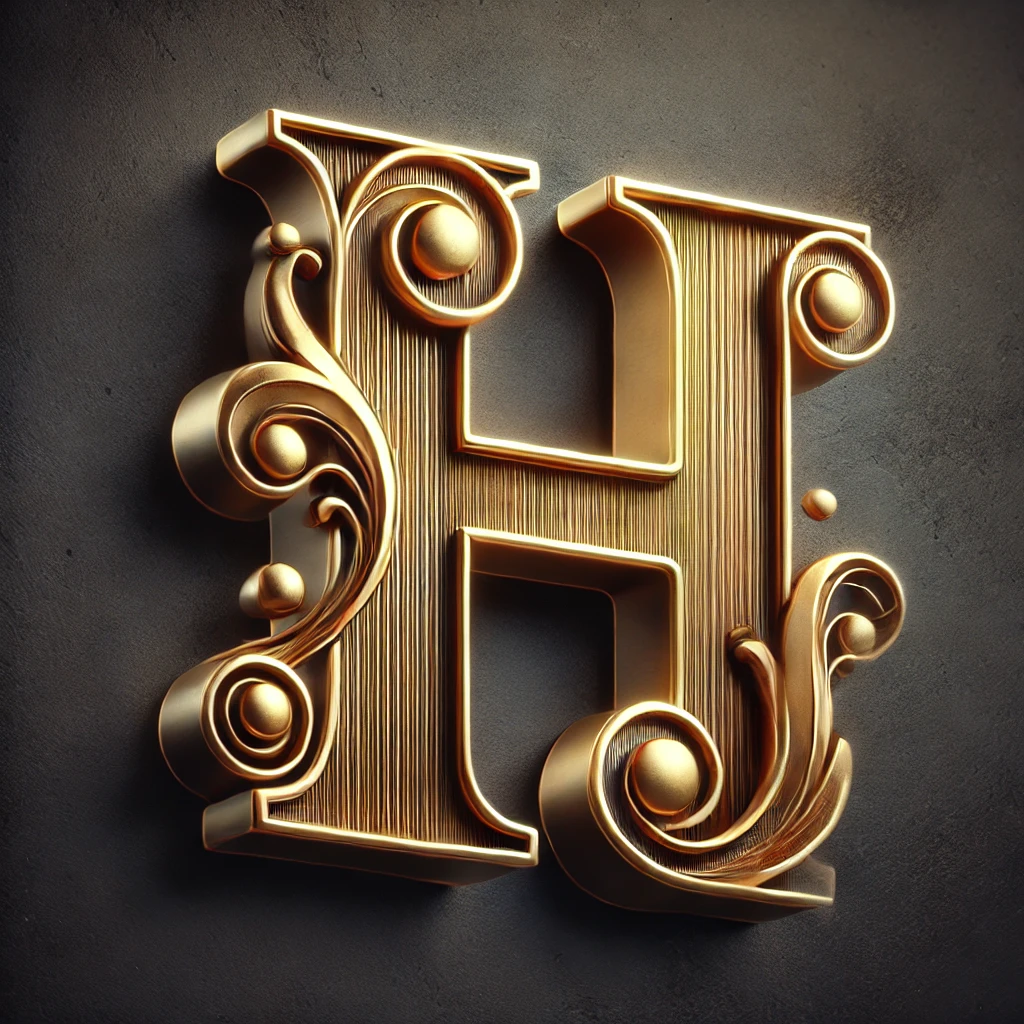
Handicrafts
Handicrafts: From the Heart of Ancient Civilizations to the Investment of the Future Introduction:
A Timeless Legacy in Our Hands Handicrafts are more than just artistic creations—they are reflections of the soul and identity of great civilizations, from Iran, Egypt, India, and China to Oman and Morocco. These ancient arts serve as a bridge between the past and the future, each piece telling a unique story of culture, civilization, and creativity. In today’s world, where mass production dominates, handicrafts hold their ground, not only for their artistic value but also for their economic and investment potential.
The Origins of Handicrafts in Human History The first signs of handicrafts date back to the Paleolithic era, around 30,000 to 40,000 years ago, when early humans used bones, ທ່ອນໄມ້, and stones for survival and artistic expression. However, the earliest documented artistic and handcrafted works belong to 10,000 to 12,000 years ago, when great civilizations like Sumer, Ancient Egypt, Persia, ຈີນ, and India began creating remarkable and lasting artifacts.
The Oldest Handicraft Discoveries in the World:
1. Painted Pottery from Susa (ອີຣ່ານ) – Around 8,000 years ago
2. Stone Seals from Mesopotamia – Over 7,000 years ago
3. Gold Jewelry and Gemstone Art from Ancient Egypt – 5,000 years ago
4. Chinese Silk Weaving – Over 4,500 years ago
5. Intricate Woven Fabrics from India – Over 4,000 years ago
6. Mosaic Pottery from Morocco and Oman – 3,000 years ago.
These discoveries highlight how handicrafts have always played a fundamental role in human civilization, serving not only practical purposes but also acting as cultural and artistic expressions of societies.
Handmade or a Living Art?
ມື້ນີ້, terms like Handmade or Handicraft are commonly used to describe artisan products, yet these items are much more than just manually crafted objects. They carry the history, culture, and aesthetic philosophy of some of the greatest civilizations. Whether from Iran, Egypt, Morocco, ໂອມານ, India, or China, handicrafts reflect the artistic mastery and unique identity of their origins.
Why Handicrafts from Great Civilizations?
1. Authenticity and Unique Art: Handicrafts from civilizations such as Iran, Egypt, India, ຈີນ, ໂອມານ, and Morocco are the result of thousands of years of craftsmanship, philosophy, and artistic excellence.
2. A Valuable Investment: Unlike mass-produced goods, handicrafts not only retain their value over time but often appreciate. Collectors and art investors recognize this market as both secure and promising.
3. The Uniqueness of Every Piece: Each handcrafted item is one-of-a-kind. Owning a miniature Susa pottery, an Indian woven textile, or a Moroccan rug means holding a tangible piece of history and heritage.
4. A Link to Civilizations: We are the ambassadors of the world’s ancient civilizations. Handicrafts serve as a universal language, connecting people through time and culture.
The Global Market and the Future of Handicrafts With the rising demand for sustainable and authentic art, handicrafts have attracted increasing attention from investors and collectors. While digital art and NFTs are on the rise, physical handicrafts remain irreplaceable, maintaining their strong position among galleries, ຜູ້ເກັບ, and art enthusiasts. ມື້ນີ້, purchasing handicrafts is not only an artistic choice but also a strategic financial investment.
ສະຫຼຸບ: A Bridge Between Art, Investment, and the Future We are witnessing a global return to authenticity. In a world that seeks deeper connections with history, art, and culture, handicrafts remain among the most valuable assets one can invest in. Whether you are a seasoned collector or an investor searching for a dynamic and appreciating market, handicrafts from the world’s greatest civilizations open the door to beauty, value, and timeless craftsmanship.
On our platform: Art-Gulf.com you will not only experience living art but also gain the opportunity to explore and invest in the eternal world of handicrafts.
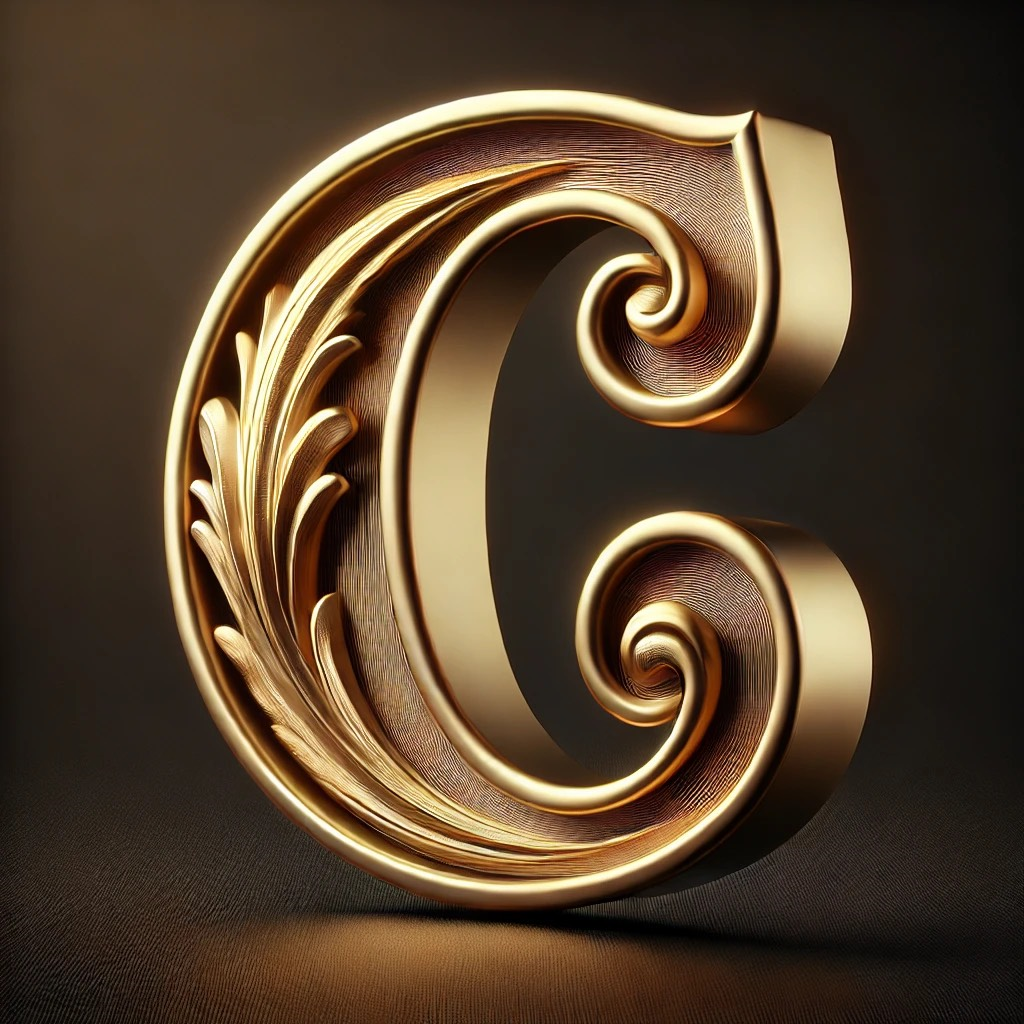
ພົມ
ພົມ: A Unique Jewel from the Heart of History, for Your Future
A Masterpiece, An Investment, A Timeless Legacy We have come from the heart of ancient civilizations to shape your future. What lies before you is not just a carpet—it is thousands of years of art, culture, and human civilization woven into every thread. Our carpets are not newly created; they have been centuries in the making.
Every knot is a continuation of a journey that began in the empires of antiquity, flourished under the Safavid dynasty, and has been passed down through generations of master artisans. Owning one of these carpets means becoming the custodian of a living history.
A Singular Piece of History, in Your Hands In a world where rarity defines true value, each of these carpets is one of a kind. No two pieces are alike, and each carries a unique story within its intricate patterns. Once sold, they will never be available again. These are not just carpets—they are ambassadors of civilization.
They have journeyed through the courts of Persian kings, adorned palaces, and stood as testaments to the brilliance of Iranian craftsmanship. Now, they stand before you, offering the chance to own an irreplaceable masterpiece. Value That Increases Over Time What makes a Persian carpet a priceless asset?
• A handcrafted work of art, not a mass-produced item.
• A one-of-a-kind masterpiece, not a replicated design.
• An investment that appreciates over time, not a fleeting purchase.
Just as paintings by Da Vinci and Rembrandt gain value with time, authentic Persian carpets are treasures that only grow more valuable with each passing year. An Exclusive Club, for Those Who Understand True Value This collection is reserved for individuals who recognize the depth of art, heritage, and timeless worth. You are not just a buyer—you are a guardian of cultural legacy. Your Last Chance to Own a Historic Masterpiece With each passing day, another one of these masterpieces leaves our collection forever. If you are ready to own a piece of history and secure an asset of lasting value, do not let this moment pass.
In Art-Gulf.com ,This is not just a purchase—this is a choice for eternity. We have come from the heart of ancient civilizations to shape your future.
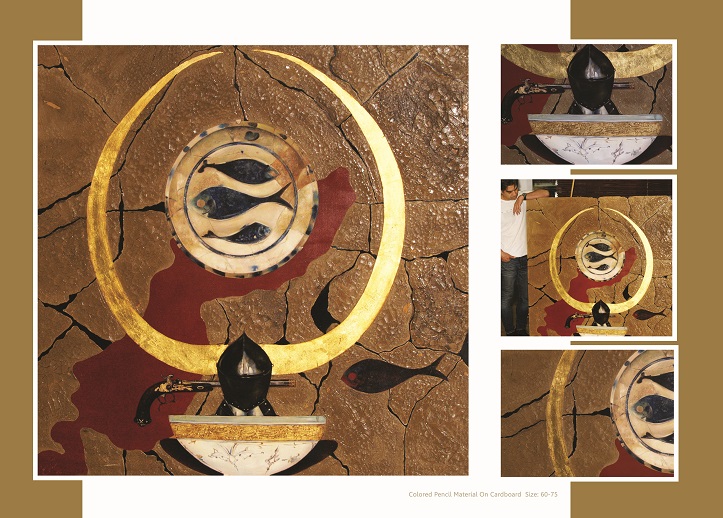
I’ve been Curaturing since 1999
We invite artists, leading galleries, renowned collectors, and investors from around the world to join us on this unique platform—where art reaches its true value.

ແມ່ບົດ Ahmad Najafi | ຊ່າງແຕ້ມ & ນັກສິລະປິນແນວຄວາມຄິດ - ຈາກເຕເຮຣານຈົນເຖິງຮູບພາບສິລະປະໂລກ.. ດ້ວຍຄວາມກະຕືລືລົ້ນທີ່ໄດ້ອົດທົນເປັນເວລາຫລາຍທົດສະວັດ, ລາວໄດ້ສ້າງສຽງທີ່ເປັນເອກະລັກໃນຮູບແບບສິລະປະຕ່າງໆ, ລວມທັງແນວຄິດ, ເລືອມເອົາ, ອະສຸດ, ແລະສໍານວນທີ່ແທ້ຈິງ. ວຽກງານສິລະປະຂອງລາວແມ່ນຫັດຖະກໍາໂດຍໃຊ້ເຕັກນິກແລະວັດສະດຸທີ່ຫຼາກຫຼາຍ - ຈາກນ້ໍາມັນ, ສວນວິນນີ, ດິນສໍສີ, ຖ່ານ, ໂສມ, ແລະໃບຄໍາ, ກັບ canvases, ທ່ອນໄມ້, ແລະຜ້າອີຣານແບບດັ້ງເດີມ. ແຕ່ລະຊິ້ນສ່ວນສະທ້ອນໃຫ້ເຫັນຄວາມຮູ້ສຶກທີ່ມີຄວາມຮູ້ສຶກຢ່າງເລິກເຊິ່ງ, ການເຊື່ອມຕໍ່ແບບກະວີລະຫວ່າງປະສົບການພາຍໃນແລະແບບຟອມນອກ. ຕັ້ງແຕ່ 1999, Master Najafi ໄດ້ຮັບການກໍານົດຮູບແຕ້ມຢ່າງຈິງຈັງໃນສະຕູດິໂອສ່ວນຕົວຂອງລາວ, ບ່ອນທີ່ທ່ານໄດ້ຝຶກອົບຮົມແລະດົນໃຈຜູ້ທີ່ມັກຮັກສິລະປະຄົນຮຸ່ນໃຫມ່. ດ້ວຍຄວາມພາກພູມໃຈທີ່ຍິ່ງໃຫຍ່, ລາວໄດ້ແນະນໍານັກຮຽນຈໍານວນຫລາຍໃຫ້ແກ່ໂລກຂອງສິລະປະທີ່ດີ - ບໍ່ພຽງແຕ່ຢູ່ໃນອີຣ່ານເທົ່ານັ້ນແຕ່ຍັງກ້ຽງ. ຜ່ານຫ້ອງຮຽນ online ແລະ virtual, ລາວໄດ້ເຮັດວຽກກັບນັກຮຽນຈາກປະເທດອົດສະຕາລີ, ການາດາ, ສະຫະລາຊະອານາຈັກ, ສະຫະລັດ, ໄກ່ງວງ, ສະຫະລັດອາຣັບເອມິເຣດ, ໂອມານ, ຄູເວດ, ແລະຫລາຍປະເທດອື່ນໆ. ລາວຍັງໄດ້ນໍາພາການສໍາມະນາຢູ່ໃນບຸກຄົນ, ລວມທັງການປະຊຸມສໍາລັບສະມາຊິກຂອງຄອບຄົວທີ່ມີຄອບຄົວພື້ນເມືອງໃນບາງສ່ວນຂອງໂລກອາຣັບ. ຮູບແຕ້ມຂອງ Najafi ໄດ້ຖືກວາງສະແດງແລະຊື້ໂດຍຜູ້ເກັບມ້ຽນແລະຫ້ອງສະແດງໃນທົ່ວໂລກ. ເຖິງວັນທີ, ຜົນງານເດີມຂອງລາວຫຼາຍຮ້ອຍຄົນຂອງລາວ - ແຕ່ລະຄໍາບັນຍາຍແລະວິນຍານຂອງຕົນເອງ - ໄດ້ຖືກຊື້ຫຼືມອບໃຫ້ສາກົນ, ແລະສະແດງຢູ່ໃນຫ້ອງສະແດງສ່ວນຕົວໃນປະເທດເຊັ່ນ: UAE, ໂອມານ, ກາຕາ, ຄູເວດ, ອັງກິດ, ອາເມລິກາ, ຈີນ, ຍີ່ປຸ່ນ, ອົດສະຕາລີ, ໄກ່ງວງ, ຣັດເຊຍ, ອິຕາລີ, ປະເທດສະເປນ, ແລະນອກເຫນືອຈາກນັ້ນ. ຊິ້ນສ່ວນຂອງລາວໄດ້ຮັບການຍົກຍ້ອງບໍ່ພຽງແຕ່ສໍາລັບຄວາມງາມກ່ຽວກັບຄວາມງາມເທົ່ານັ້ນແຕ່ຍັງເປັນການລົງທືນທີ່ເກັບກໍາໄດ້ແລະຜູ້ເກັບມືອາຊີບຄືກັນ. ພວກເຮົາໄດ້ມາຈາກໃຈກາງຂອງພົນລະເມືອງບູຮານໃນອະນາຄົດຂອງທ່ານ - ແລະ Master Ahmad Najafi ແມ່ນຫນຶ່ງໃນບັນດາເອກອັກຄະລັດຖະມົນຕີທີ່ດົນໃຈໃນການເດີນທາງນີ້.
Ahmad Najafi

"ໃນໂລກນີ້, ບໍ່ມີຄວາມເປັນເຈົ້າຂອງຖາວອນ; ໂອກາດທີ່ຈະເພີດເພີນກັບຊັບສົມບັດທີ່ເປັນເອກະລັກເຫຼົ່ານີ້ໄດ້ຜ່ານພວກເຮົາ, ແລະໃນປັດຈຸບັນມັນແມ່ນການຫັນຂອງທ່ານທີ່ຈະມີ, ເບິ່ງ, ສໍາພັດ, ແລະແລກປ່ຽນວຽກງານສິລະປະທີ່ມີຄ່າເຫລົ່ານີ້ກັບຄົນລຸ້ນຫລັງ. "
Jessica Simon
gulf ສິນລະປະລະບົບສິນລະປະລະຫວ່າງປະເທດ
ແມ່ບົດ Rasoulian | ຕົ້ນສະບັບຂອງໄມ້ Inlay (ໂມໂຫ) ແລະການແກະສະຫຼັກບັນເທົາທຸກ - ຕັ້ງແຕ່ຮາກທີ່ບໍ່ມີເວລາໄປສູ່ໂລກຂອງ Masterpieces Master Rasoulian, ເກີດໃນອີຣ່ານ, ແມ່ນມາຈາກຄອບຄົວທີ່ຮາກຖານເລິກຢູ່ໃນປະເພນີຂອງສິນລະປະ. ລ້ຽງຢູ່ໃນຄົວເຮືອນທີ່ພົມປູພື້ນທີ່ດູແລແມ່ນມໍລະດົກຂອງຄອບຄົວແລະເພັງຂອງດົນຕີແລະສຽງປ່ອນບັດທີ່ເຕັມໄປດ້ວຍອາກາດ, ຄວາມມັກຂອງລາວສໍາລັບສິນລະປະໄດ້ຮັບການລ້ຽງດູຈາກອາຍຸຍັງນ້ອຍ. ລາວໄດ້ຮັບຄວາມຄຸ້ນເຄີຍກັບທຸກໆຂັ້ນຕອນຂອງການຜະລິດພົມປູພື້ນທີ່ເຮັດດ້ວຍມືແລະພັດທະນາທັກສະພິເສດໃນແງ່ມຸມຕ່າງໆຂອງຫັດຖະກໍາຕ່າງໆຂອງຫັດຖະກໍານີ້. ການພົວພັນຢ່າງເລິກເຊິ່ງຕໍ່ສິລະປະພື້ນເມືອງໄດ້ເຮັດໃຫ້ລາວຕິດຕາມການສຶກສາຢ່າງເປັນທາງການໃນຂະແຫນງການຫັດຖະກໍາ. ໃນ 2005, ລາວຮຽນຈົບຈາກໂຮງຮຽນສິລະປະດ້ານວິຊາການແລະຕໍ່ມາໄດ້ຮັບປະລິນຍາຕີໃນການອອກແບບພົມປູພື້ນ, ຄວາມເລິກເຊິ່ງທັງການສຶກສາແລະຄວາມເຂົ້າໃຈດ້ານສິລະປະຂອງລາວ. ການສໍາຜັດກັບເລຂາຄະນິດຂອງລາວໃນຮູບແບບພົມປູພື້ນແລະຄວາມງາມແບບທໍາມະດາໄດ້ດຶງດູດລາວໄປສູ່ໂລກ (ໂມໂຫ) ແລະແກະສະຫຼັກບັນເທົາທຸກ (monabbat). ແຕ່ນັ້ນ, Master Rasoulian ໄດ້ສ້າງຫຼາຍຮ້ອຍຄົນທີ່ໂດດເດັ່ນຈາກການອອກຈາກປະເທດໄມ້ໃນກະດານໄມ້ແລະເຄື່ອງເຟີນີເຈີທີ່ຖືກແກະສະຫລັກຢ່າງແຫນ້ນຫນາໃສ່ໂຕະໄມ້ປະດັບທີ່ຫລູຫລາ. ແຕ່ລະຊິ້ນສ່ວນຂອງລາວແມ່ນປະເພນີທີ່ເປັນເອກະລັກຂອງປະເພນີ, ການສະແດງສ່ວນຕົວ, ແລະເຕັກນິກທີ່ຫລອມໂລຫະ. ຕົ້ນສະບັບຂອງລາວໄດ້ຖືກສົ່ງອອກດ້ວຍຄວາມພູມໃຈກັບປະເທດຕ່າງໆລວມທັງສະຫະລັດອາຣັບເອມີເຣດແຂກອາຫລັບ, ຄູເວດ, ກາຕາ, ສະຫະລາຊະອານາຈັກ, ສະຫະລັດ, ແລະອື່ນໆຫຼາຍ, ແລະໄດ້ພົບເຫັນເຮືອນໃນຫ້ອງສະແດງສ່ວນຕົວແລະການລວບລວມທີ່ມີຊື່ສຽງໃນທົ່ວໂລກ. Art Nhis ເຮັດຫນ້າທີ່ເປັນຂົວຂ້າມແດນລະຫວ່າງອະດີດທີ່ຮຸ່ງເຮືອງແລະອະນາຄົດທີ່ມີຫົວໃຈໃນໂລກສິລະປະ, ປະສົມກົມກຽວ, ແລະວິນຍານທີ່ອົດທົນຂອງມະນຸດໃນທົ່ວພົນລະເມືອງແລະວັດທະນະທໍາ. ພວກເຮົາໄດ້ມາຈາກໃຈກາງຂອງພົນລະເມືອງບູຮານເພື່ອສ້າງແບບອະນາຄົດຂອງທ່ານ - ແລະ Master Rasoulian ແມ່ນຫນຶ່ງໃນສຽງທີ່ສຸດຂອງການເດີນທາງທີ່ບໍ່ມີເວລານີ້.
ແມ່ບົດ Rasoulian
gulf ສິນລະປະລະບົບສິນລະປະລະຫວ່າງປະເທດ
ແມ່ບົດ Hossein Bishe'i | ໄວດາຍທີ່ເວົ້າ, ບໍ່ພຽງແຕ່ສຽງເທົ່ານັ້ນ
ເກີດຢູ່ໃນ Tehran-A A ເມືອງ, ບ່ອນທີ່ມີສຽງອາໄສຢູ່ໃນບ່ອນທີ່ມີຊີວິດຢູ່ໃນທ່າແຮງຂອງຊີວິດ Bishe'i ໄດ້ອຸທິດໃນໄລຍະສາມທົດສະວັດໃນການສະແຫວງຫາຮູບແບບດົນຕີທີ່ບໍລິສຸດ. ເລີ່ມຕົ້ນການເດີນທາງຂອງລາວໃນ 1986 ມີຫັດຖະກໍາຂອງຜູ້ຊາຍ, ຕໍ່ມາລາວໄດ້ຄົ້ນຄວ້າ tar, ແລະນັບຕັ້ງແຕ່ 2003, ລາວໄດ້ອຸທິດຫັດຖະກໍາຂອງລາວຢ່າງເຕັມທີ່ໃຫ້ແກ່ໄວໂອລິນ - ເຄື່ອງມືທາງຕາເວັນຕົກທີ່ເກີດຂື້ນໃນມືຂອງລາວເປັນຈຸດປະສົງຂອງທັງສຽງແລະສິລະປະ. ແຕ່ລະເຄື່ອງມືຂອງລາວແມ່ນທັງຫມົດດ້ວຍມືທັງຫມົດ. ຈາກລາຍລະອຽດຂອງເນື້ອໄມ້ທີ່ລະມັດລະວັງໄປຫາລາຍລະອຽດທີ່ຖືກປັບປຸງໃຫມ່, Bishe'i ສ້າງຕົ້ນສະບັບ - ສ້າງຊິ້ນສ່ວນທີ່ມີຄວາມຍຸຕິທໍາ - ເປັນຄູ່ແຂ່ງທີ່ພົບເຫັນໃນເວລາດຽວຂອງກອງປະຊຸມ. ຜົນງານຂອງລາວໄດ້ສົ່ງຊາຍແດນ. violins ໂດຍ Hessein Bishe'i ໄດ້ບັນລຸນັກດົນຕີທີ່ແນມເບິ່ງແລະນັກສະສົມໃນສະຫະລັດອາຣັບເອມີເຣດ, ກາຕາ, ຄູເວດ, ປະເທດສະເປນ, ອິຕາລີ, ສະຫະລາຊະອານາຈັກ, ການາດາ, ສະຫະລັດ, ແລະນອກເຫນືອຈາກນັ້ນ. ມື້ນີ້, ເຄື່ອງມືຂອງລາວໄດ້ຖືກຫຼີ້ນຜ່ານ 5 ທະວີບ, ແຕ່ລະຄົນຖືສຽງທີ່ເປັນເອກະລັກສະເພາະ - ເປັນລາຍເຊັນທີ່ມີການຟັງຂອງນັກສິລະປິນຜູ້ທີ່ເປັນຮູບຊົງມັນ. ສໍາລັບແມ່ບົດ bishe'i, ໄວໂອລິນບໍ່ແມ່ນພຽງແຕ່ເຄື່ອງມືເທົ່ານັ້ນ, ແຕ່ເຮືອຂອງວິນຍານ. ຫັດຖະກໍາຂອງລາວແມ່ນການສົນທະນາກັບ Wood- ການຫັນເປັນຕົ້ນໄມ້ທີ່ມີຊີວິດຢູ່ເທື່ອດຽວເຂົ້າໃນເຮືອຂອງສຽງນິລັນດອນ. ເຫຼົ່ານີ້ບໍ່ແມ່ນພຽງແຕ່ເຄື່ອງມື. ພວກເຂົາແມ່ນວຽກງານສິລະປະ. ພວກເຂົາແມ່ນສຽງ. ແລະທຸກໆຄັ້ງທີ່ຫນຶ່ງໃນຄວາມໄວຂອງລາວຖືກຫຼີ້ນ, ມັນສະທ້ອນໃຫ້ເຫັນພຽງແຕ່ບັນທຶກເທົ່ານັ້ນ, ແຕ່ຄໍາສັນຍາ: "ພວກເຮົາໄດ້ມາຈາກໃຈກາງຂອງພົນລະເມືອງບູຮານເຖິງອະນາຄົດຂອງທ່ານ."
ແມ່ບົດ Hossein Bishe
gulf ສິນລະປະລະບົບສິນລະປະລະຫວ່າງປະເທດ
ເບິ່ງທ່ານໃນໄວໆນີ້
ວັນຄຣິສມາດ
gulf ສິນລະປະລະບົບສິນລະປະລະຫວ່າງປະເທດ
Yashar malfouzi ຊື່ຂອງຂ້ອຍແມ່ນ yashar malfouzi (1978) ແລະຂ້ອຍເກີດຢູ່ໃນ tabriz, ອີຣ່ານ, ເຂົ້າໄປໃນຄອບຄົວທີ່ໄດ້ເຂົ້າຮ່ວມໃນທຸລະກິດໃນການຜະລິດແລະການແຈກຢາຍພົມປູພື້ນແລະພົມປູພື້ນ, ສໍາລັບ 4 ຄົນລຸ້ນເຮືອນ. ຂ້າພະເຈົ້າມີຄວາມສົນໃຈຫຼາຍກ່ຽວກັບສິນລະປະພົມອາຊີບຕັ້ງແຕ່ເລີ່ມຕົ້ນໃນໄວເດັກຂອງຂ້ອຍ, ແລະໃນອາຍຸຂອງ 12, ຂ້ອຍໄດ້ຮັບສະຖານະພາບຂອງຂ້ອຍໃນການທໍຜ້າພົມ; ແລະຮຽນຮູ້ການທໍຜ້າ, ການສ້ອມແປງແລະແມ່ນແຕ່ຂະບວນການຍ້ອມສີ. ໃນລະດັບຂອງ 15, ຂ້າພະເຈົ້າໄດ້ເລີ່ມຕົ້ນທີ່ຈະເຮັດໃຫ້ຮູບແບບແລະຮູບແບບ 3D ໃສ່ພົມປູພື້ນແລະພົມປູພື້ນ, ການນໍາໃຊ້ເຕັກນິກທີ່ສອນດ້ວຍຕົນເອງ. ເພື່ອລ່ວງຫນ້າກ່ຽວກັບການຮຽນຂອງຂ້ອຍ, ຄວາມຮູ້ແລະເຕັກນິກ, ຂ້ອຍໄດ້ເຂົ້າໄປໃນມະຫາວິທະຍາໄລໃນປີ 2011, ແລະສາມາດຈົບການສຶກສາດ້ວຍກຽດ, ສະເພາະຕົວໆ 6 ພາກຮຽນ, ຈາກມະຫາວິທະຍາໄລສິນລະປະ, ກັບການອອກແບບພົມປູພື້ນພົມປູພື້ນ. ຫລັງຈາກນັ້ນ, ເພື່ອສືບຕໍ່ການສຶກສາຂອງຂ້ອຍແລະເພື່ອສ້າງຄວາມຮູ້ຂອງຂ້ອຍ, I started a master's degree in Arts History, ເຊິ່ງຂ້າພະເຈົ້າໄດ້ສໍາເລັດການກັບກຽດຕິຍົດແລະຂ້າພະເຈົ້າໄດ້ຮັບລະດັບສິລະປະຂອງລັດ. ຜົນງານຂອງຂ້ອຍກໍ່ໄດ້ຮັບການຈັດອັນດັບກ່ອນ: ງານບຸນຂອງຄວາມຄິດສ້າງສັນແລະການປະດິດສ້າງຂອງວຽກງານອິສລາມ, ບຸນ Rashidi, ງານບຸນພົມປູພື້ນທີ່ຫນ້າທໍາອິດຂອງ Tabriz (ສອງປີຕິດຕໍ່ກັນ). ໃນສຸດທ້າຍ 25 ປີ, ຂ້ອຍໄດ້ຮັບການຄ້າ 30,000 ພົມປູພື້ນແລະພົມປູພື້ນແລະນັບແຕ່ປີ 2011, ຂ້າພະເຈົ້າໄດ້ເລີ່ມຕົ້ນທີ່ຈະສົ່ງຜ້າພົມສິລະປະທີ່ເປັນເອກະລັກຂອງຂ້າພະເຈົ້າໃຫ້ກັບພາກສ່ວນຕ່າງໆຂອງໂລກ. ຂ້າພະເຈົ້າຄວນຊີ້ໃຫ້ເຫັນວ່າຜົນງານຂອງຂ້າພະເຈົ້າແມ່ນມືທີ່ເຕັມໄປດ້ວຍມືໃນແບບດັ້ງເດີມ, ແລະແຕ່ລະວຽກງານມີຄວາມຫມາຍທີ່ເປັນເອກະລັກສະເພາະຂອງຕົນເອງ, ເຊິ່ງໄດ້ຖືກຝັງຢູ່ໃນຮູບແບບທີ່ຖືກຝັງຢູ່ຂອງພົມປູພື້ນ. ຜ້າພົມເຫຼົ່ານີ້ມີຈຸດປະສົງຕົກແຕ່ງແລະຖືກຕິດຢູ່ເທິງຝາ. ເຫຼົ່ານີ້ຝັງດິນຫາງທີ່ມີຮູບແບບ 3D, ໄດ້ຖືກສົ່ງໄປສະຫະລັດອາເມລິກາ, ການາດາ, ສະວິດເຊີແລນ, ຍີ່ປຸ່ນ, ກາຕາ, ຄູເວດ, ສະຫະລັດອາຣັບເອມິເຣດ, ເຢຍລະມັນແລະຫລາຍປະເທດອື່ນໆ.
Yashar malfouzi


